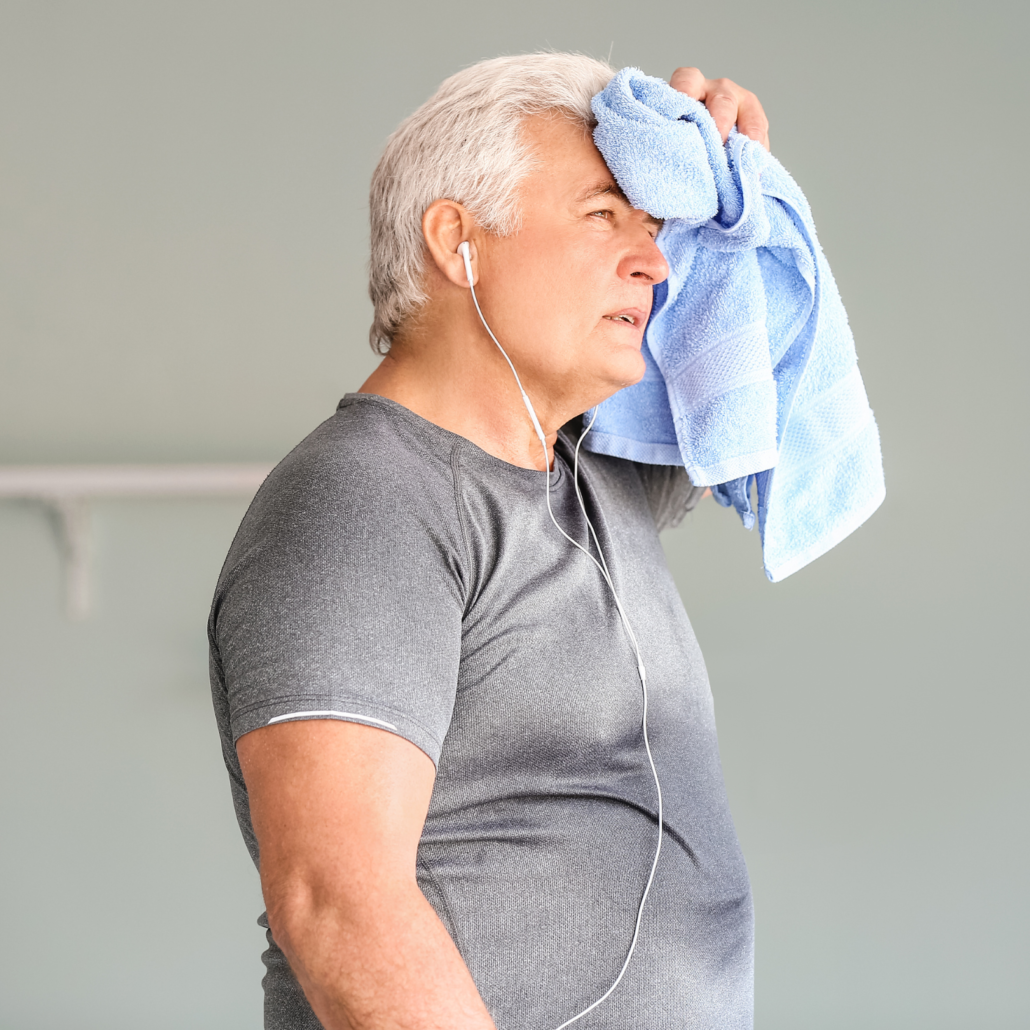Last Updated on January 9, 2025 by
Teaching group exercise classes in the summer can be a great joy. The smiles, the extra sweat, the banging playlist.
But as the temperature rises and your venues start to warm up, you may be asking yourself “How hot is too hot?”.
We’ve rounded up what you need to know about teaching in temperatures, keeping your classes safe, and top tips on staying cool.
What temperature should a fitness studio be?
Generally speaking, fitness studios will be operating at 18 degrees Celsius, with gyms being slightly lower. However, if you’re teaching in a community venue, your space may differ due to the multi-function of the room.
It is normal for temperatures to fluctuate slightly in these spaces, especially as people start to work out in them.
Is there a legal temperature limit?
According to Gov.uk, there is currently no maximum temperature limit. This is where group exercise instructors must understand temperature risks and use their own judgement when planning and running summer classes.
Temperatures between 26-32 degrees Celsius can cause signs of fatigue and exhaustion when taking part in prolonged exercise.
Temperatures above 32 degrees Celsius present risks of heat exhaustion and heatstroke, which must be taken very seriously.
Alpine Trek has a handy tool where you can work out the exercise risk by inputting the air temperature and the humidity to get a reading. Use it for yourself here.
Signs and symptoms of heat exhaustion and heatstroke
The NHS list of signs and symptoms of heat exhaustion includes:
- tiredness
- dizziness
- cramps in the arms, legs and stomach
- fast breathing or heartbeat
- excessive sweating and skin becoming pale and clammy or getting a heat rash, but a change in skin colour can be harder to see on brown and black skin
Familiarise yourself with the full list here.
Helping someone with heatstroke
If one of your class attendees starts to suffer from heat exhaustion, you should follow the following steps:
- Move them to a cool, shaded area.
- Ask them to remove unnecessary clothing, such as shoes, socks.
- Get them to drink cool water and/or a sports drink.
- Spray or sponge their skin with cool water to cool them down. Fan them and where possible, apply wrapped cold compresses to their armpits and/or back of neck.
If in any doubt, call 111.
If the person has not cooled down within 30 minutes, has a seizure, or their symptoms worsen or change, call 999.
What safety measures should I put in place?
All group exercise instructors must do due diligence when taking group exercise classes in the heat. These measures should include (but are not exhaustive to):
- Check PAR-Q forms for any medical conditions that may be affected by heat. Be aware of medical risks as certain conditions or medications can increase the risk of a heat-related illness. Participants should have checked with their doctor before exercising.
- Work with your venue to cool the room. If the room has air conditioning, make sure that is on before your class starts. If not, open windows and doors and make use of fans where possible to circulate airflow.
- Reduce the intensity of your class. Your class intensity shouldn’t be making people suffer in the heat. Look at adapting your movements for the summer weather and adding in extra rest breaks.
- Look for shaded areas. If you’re running outdoor classes, these should ideally not take place in times of peak heat. This is usually between the hours of 11.00am – 3.00pm. The hottest time of the day may vary so check your local weather forecast regularly. However, if this is unavoidable, look for shaded areas and remind class attendees (and yourself!) to wear sunscreen and a hat.
- Stay hydrated. You should drink plenty of fluids when you exercise and even more so in the heat. Remind your participants to do the same and suggest they bring extra drinks with them.
- Know your own limits. You need to understand your own limits and make sure you’re working out within them too.
Sharing the information
We’ve created social media tiles and a handy factsheet to share with your class members. You can download these for free here.
Additional reading
- UK Health Security Agency – Staying Safe in Extreme Heat
- NHS – Dehydration
- Files Thru the Air – Monitoring Leisure Facilities



